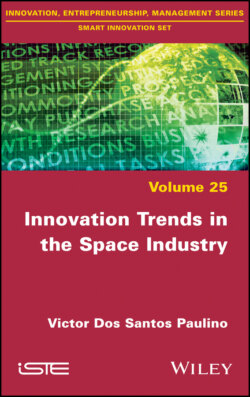Читать книгу Innovation Trends in the Space Industry - Victor Dos Santos Paulino - Страница 9
Innovation strategies of space firms
ОглавлениеThe slowdown in innovation observed in the space industry is leading to the emergence of a paradox. Satellites are high-tech products that carry few recent electronic components and are developed through processes largely inspired by what was done in the 1950s. How should the conservatism of this high-tech industry be interpreted? Are the innovation strategies of satellite producers irrational and do they jeopardize their survival? On the contrary, do space activities require a certain inertia?
We have chosen to refer to evolutionary work to answer these questions. The interpretation of delays in the adoption of technological innovations is a matter of debate. The dominant view is that adoption delays are dangerous for the survival of organizations. Nevertheless, some research on industries close to the space industry has shown that too rapid adoption of new technologies can jeopardize the survival of organizations (Anderson and Tushman 1990; Musso 2009). One example is Rosenberg’s (1976) pioneering study on the aviation industry. Within the framework of this evolutionary work, there is also a debate about whether organizational change promotes organizational survival or mortality (Hannan and Freeman 1984; Nelson and Winter 1982). In this book, we consider that these different perspectives about the effects of innovation on organizations’ survival must be seen as complementary (Carroll and Teo 1996).
The study of innovation strategies of space firms leads us to highlight the existence of a positive link between slow adoption of innovations, product reliability and organizational survival. On the one hand, we show that the slow adoption of technological innovations is rational behavior when it allows reliability to be maintained. This strategy is mainly explained by risk aversion. On the other hand, it appears that the slow adoption of organizational innovations promotes the survival of organizations when the environment is risky. This strategy aims to maintain the high levels of reliability achieved during successful space missions by achieving rigorous organizational replication (i.e. replication of processes, rules, and methods). There are several similarities between these two strategies, which we call inertia strategies. First, the inertia strategy is not immobility but a prudent adoption of innovations. Then, these strategies are observed in a risky context as is the case in space activities. Finally, these strategies generally lead to delays in the adoption of innovations, even in the case of a high-tech industry.
These results explain why the slow adoption of innovations is a key success factor in the space industry. In a risky environment, this ensures the high levels of reliability required. We consider inertia strategies to be a rational response of space organizations. It is, therefore, necessary to reinterpret the notion of inertia within innovation management. As Rosenberg (1976) suggested, adopting innovations carefully can be more effective for the survival of organizations than adopting them too quickly. As a result, some technological and organizational delays reflect the control of a key success factor and not a weakness that must be reduced by accelerating innovation.
By studying the advantages of prudent adoption, we can interpret the conservatism displayed by a high-tech industry. However, our work ignores the risks of overly rigorous inertia strategies that would lead to underestimating high-potential innovations. The current acceleration of the commercialization of space forces existing firms to question whether they are facing innovations of this type.
